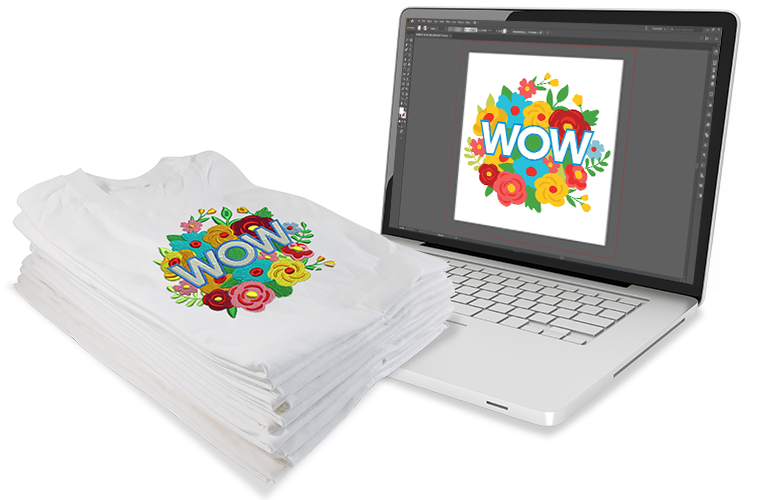Reliable Digitizing for Embroidery: Quick Turn-around
Reliable Digitizing for Embroidery: Quick Turn-around
Blog Article
Understanding the Embroidery Digitizing Process: Your Ultimate Overview
Embroidery digitizing is a careful craft that calls for accuracy and knowledge to equate complex styles right into digital formats for device embroidery. As artisans embark on this journey to master the embroidery digitizing process, an extensive understanding of the fundamentals sets the foundation for excellence.

Understanding Needlework Digitizing Fundamentals
Needlework digitizing essentials create the foundation upon which elaborate layouts are converted into machine-readable styles for specific stitching. This initial action in the needlework digitizing process is critical for guaranteeing that the last stitched item is a loyal representation of the original design. Comprehending embroidery digitizing fundamentals includes comprehending vital concepts such as stitch types, sew instructions, density, underlay, and pull payment.
Stitch types play a vital duty in determining the aesthetic and textural result of the embroidered design. By choosing the suitable stitch type, whether it be satin, fill, or running stitch, digitizers can achieve the wanted impact and improve the overall quality of the needlework. In addition, sew instructions affects the circulation and dimension of the design, while density identifies the spacing and protection of the stitches.
Additionally, padding sewing gives security to the style by protecting the fabric and protecting against distortion throughout the needlework process. Draw payment is one more vital factor to consider to counteract the natural tendency of textile to agreement when stitched. Mastering these embroidery digitizing essentials is basic for producing professional-quality embroidered products.
Choosing the Right Digitizing Software Program
Selecting the proper digitizing software is an essential decision that substantially impacts the effectiveness and top quality of the embroidery digitizing process. Digitizing for Embroidery. When picking the right digitizing software application, it is necessary to take into consideration factors such as the complexity of layouts you plan to create, the user-friendliness of the software program, the level of client assistance supplied, and the compatibility with your needlework device
There are numerous digitizing software choices offered out there, varying from basic programs for beginners to innovative software application for specialist digitizers. Some preferred selections consist of Wilcom EmbroideryStudio, Hatch Needlework Software Program, and PulseID. These software program plans offer a wide variety of devices and functions to assist you create elaborate styles with simplicity.
Before making a decision, it is recommended to check out the different software options through free trials or trials to establish which one ideal matches your demands. Furthermore, checking out reviews and seeking referrals from seasoned digitizers can give beneficial understandings into the staminas and weaknesses of each software (Digitizing for Embroidery). By thoroughly examining your demands and comparing the attributes of various digitizing software application, you can make an educated option that enhances your visit homepage needlework digitizing process
Digitizing Tools and Methods

Optimizing Layout Settings for Embroidery
Understanding the complexities of layout settings is basic in accomplishing ideal outcomes in the embroidery digitizing process, structure upon the foundation laid by recognizing digitizing tools and methods. When optimizing style setups for embroidery, it is necessary to consider elements such as stitch kind, density, rug, draw compensation, and enrollment. Enrollment settings line up various elements of the style properly, maintaining general layout integrity.

Troubleshooting Common Digitizing Issues
When running into typical digitizing concerns during the needlework process, it is important to understand the origin triggers and execute effective services without delay. One typical issue is stitch density problems, where stitches might be as well thick, triggering the textile to pucker, or also sparse, bring about gaps in the style. Readjusting the stitch density settings in the digitizing software program can site help solve this concern.
Another constant challenge is string breaks during the needlework process. This can happen due to numerous reasons such as inaccurate tension settings, boring needles, or utilizing low-grade string. Making sure correct upkeep of the needlework equipment, consisting of normal needle adjustments and stress changes, can decrease the occurrence of string breaks.
Moreover, design registration errors can result in misaligned elements within the embroidery layout. Examining the layout placement in the digitizing software program and making essential changes prior to sewing can assist in avoiding this issue. By dealing with these common digitizing issues promptly and effectively, you can ensure a smoother needlework procedure and high-grade ended up products.
Final Thought
To conclude, grasping the embroidery digitizing process calls for a strong understanding of the essentials, the ideal option of software application, and understanding of tools and strategies. Maximizing style setups and fixing common digitizing issues are essential action in ensuring high-grade needlework results. By following these steps faithfully, one can attain precision and efficiency in the digitizing procedure.
Report this page